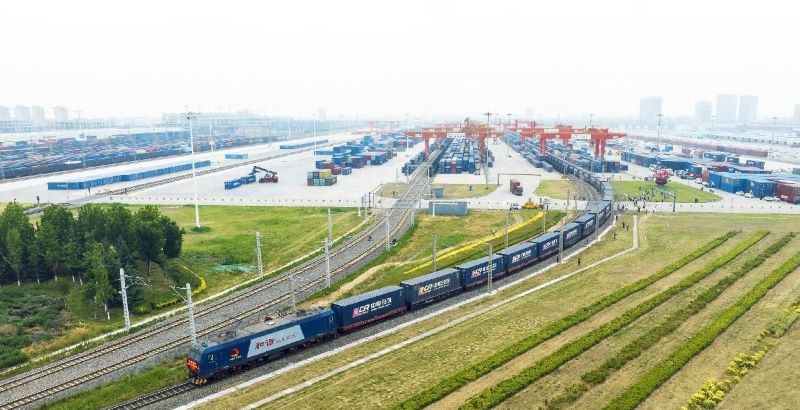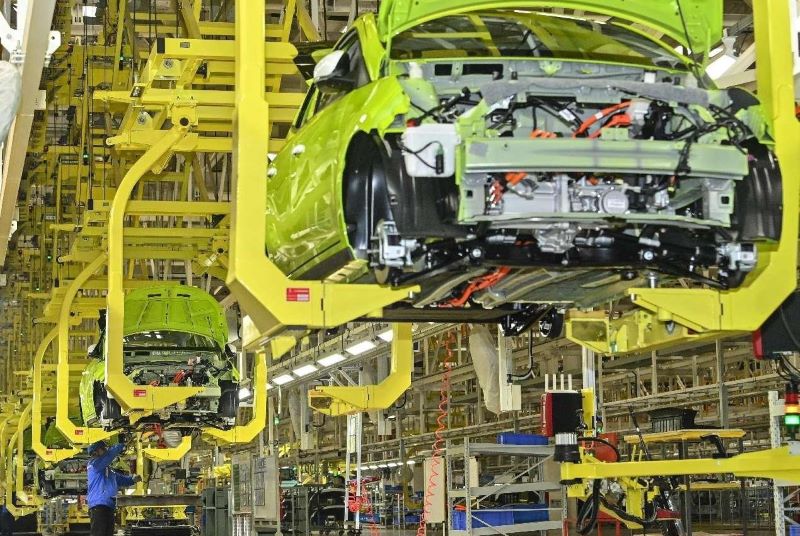China's 'Blue Engine' Powers Ahead

Agency : Vast, beautiful, and rich in resources, the ocean offers boundless opportunities. In 2024, China's marine economy exceeded 10 trillion yuan ($1.39 trillion) for the first time, a 75.9% increase over the past decade. Fueled by expanding scale and robust momentum, the sector is experiencing rapid growth in emerging industries such as marine engineering equipment and marine biomedicine. The tertiary marine industry has now become the primary driver of this blue economic surge.
Smarter, Faster Maritime Transport
With the sound of a ship's horn, a container vessel loaded with small commodities from Yiwu, east China's Zhejiang province, departed Ningbo-Zhoushan Port. At 12:36 am Beijing time, it arrived at the Port of Jebel Ali in the United Arab Emirates, completing a 17-day journey. This marked the successful launch of a dual-mode logistics channel combining sea-rail express and fast maritime shipping from Yiwu to the UAE via Ningbo-Zhoushan Port.
"Yiwu goods first travel via sea-rail express to Ningbo-Zhoushan Port. After warehouse consolidation, containers move directly to the port without repacking, saving at least three days versus traditional road transport," explained Lyu Zhe, business manager of a Zhejiang-based supply chain service company.
The second leg of the journey, under the fast maritime shipping model, requires close coordination among ports, customs, shipping lines, and inland warehouses to ensure seamless connectivity with deep-water ports. This allows goods to travel directly from consolidation centers in Yiwu to distribution terminals in Dubai.
"Previously, shipping Yiwu goods to the Middle East took about 25 days, with frequent customs delays," Lyu added. "This new logistics model has built a more efficient trade and logistics corridor between Yiwu and the Middle East, significantly shortening delivery time and cutting logistics costs by 18%."
With Ningbo-Zhoushan Port as its hub, China has now established two high-efficiency intermodal corridors: Hefei-Anhui to Wilhelmshaven, Germany, and Yiwu to Dubai, demonstrating the model's operational maturity.
The Yiwu West Railway Station - Ningbo-Zhoushan Port sea-rail intermodal route now bridges the "world's supermarket" and the world's busiest port. The port's sea-rail network serves 67 cities across 16 provinces, with cargo throughput ranking first globally for 16 consecutive years.
Smarter, Greener Marine Fisheries
"These juvenile large yellow croakers are ready to be moved onto the ship for offshore farming," said Wu Yimei, a juvenile fish breeder in Ningde, southeast China's Fujian province, as she pointed to a tank on a transport vessel teeming with fish.
What kind of ship can be used for fish farming? Not long after departing, a massive vessel came into view on the open sea, with the name Guoxin-1 painted on its hull.
"Guoxin-1 represents the world's first 100,000-tonne intelligent aquaculture vessel," said Qu Shancun, general manager of the vessel. Measuring 249.9 meters long and with a displacement of 130,000 tonnes, it pioneers a roaming, vessel-based aquaculture model and boasts an annual production capacity of 3,200 tonnes.
Below deck, Guoxin-1 houses 15 aquaculture tanks containing 90,000 cubic meters of water, equivalent to 36 standard swimming pools. The tanks feature 24-hour water circulation and oxygenation systems that simulate deep-sea, wild-like conditions ideal for fish growth.
Equipped with more than 2,000 sensors, the ship enables real-time monitoring of environmental indicators and fish development from its central control room. Once the fish are ready, they can be processed and packaged directly onboard. To date, Guoxin-1 has traveled over 18,000 nautical miles and transferred more than 12 million self-bred juvenile large yellow croakers.
A Thriving Marine Tourism Sector
With a sea area of 6,064 square kilometers, 408 kilometers of coastline, around 70 kilometers of sandy beaches, and 126 islands, Pingtan in Fujian province boasts abundant marine tourism resources.
To enhance the visitor experience of island hopping and ocean activities, Pingtan launched the Pier. 22 International Yacht Marina in June last year. The facility features 49 berths and offers a variety of water-based experiences, including sailing, yachting, artificial wave surfing, jet skiing, and water go-karting.
Now, wave-chasing and sunset-viewing at sea have become a must-do activity for many tourists. Lin Xiaoyan, a visitor from Fuzhou, capital of Fujian province, booked a sunset cruise with her friends. They enjoyed the sea breeze and the sunset glow while watching performances and taking photos in themed outfits on the ship. "Sipping a drink by the window and taking in the view was pure bliss," she explained.
"Our single-vessel daily passenger record reached 1,500 last year," said Wang Feng, Chairman of Pingtan Maritime Sightseeing Cruise Co., Ltd. "This summer, we plan to add two daily sailings and introducing themed offerings such as maritime study tours, corporate retreats, and oceanic weddings packages."
From January to May this year, Pingtan received nearly 4.39 million domestic tourists, a year-on-year increase of 15%, generating 4.29 billion yuan in tourism revenue, up 18.5% compared to the same period last year.
-By Han Xin, Wang Zhe, Shi Yu, People's Daily














प्रतिकृया दिनुहोस